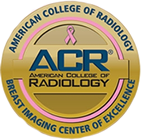Breast Imaging Center
UR Medicine Breast Imaging is providing the advanced care that women need.
- Expertise backed by research. As part of an academic medical center, our providers are continuously working to advance the detection and assessment of breast disease.
- Investments in cutting-edge technology. Our team uses various methods in the detection of breast cancer. These include Cone-Beam Breast CT and Tyrer-Cuzick Risk Assessment. We also have the only Hereditary Cancer and Risk Reduction Program that can identify women with increased breast cancer risk, follow them closely and ensure that any possible cancers are detected and treated quickly.
- Continuity of care. We collaborate with the breast specialists at UR Medicine's Wilmot Cancer Institute to ensure that all necessary treatments and support is available.
Highland Hospital Locations
Calkins Corporate Park - Henrietta
500 Red Creek Drive, Suite 130
Rochester, NY 14623
Greece
155 Bellwood Drive, Suite 2A
Rochester, NY 14606
Highland Hospital
1000 South Ave,
Rochester, NY 14620
Jordan Health
82 Holland Street, Room 101 E
Rochester, NY 14605
Penfield Crossings
2212 Penfield Road, Suite 500
Penfield, NY 14526
 A Center of Excellence
A Center of Excellence
UR Medicine Breast Imaging Center is designated a Breast Imaging Center of Excellence by the American College of Radiology's (ACR) Commission on Quality and Safety and the Commission on Breast Imaging for a three-year term as a result of a recent survey by the ACR. The ACR Breast Imaging Center of Excellence designation signifies that UR Medicine Breast Imaging provides these services to the Rochester and surrounding communities at the highest standards of the radiology profession.